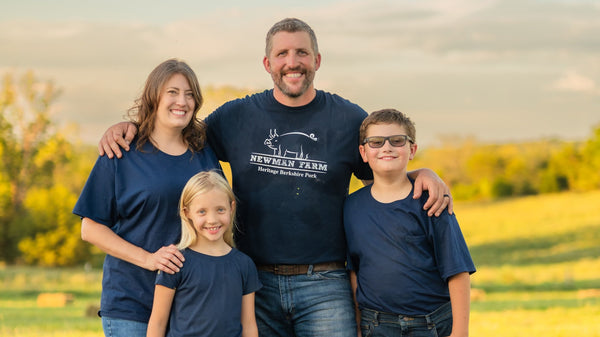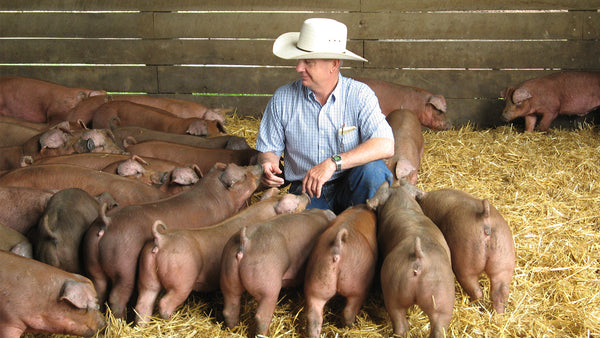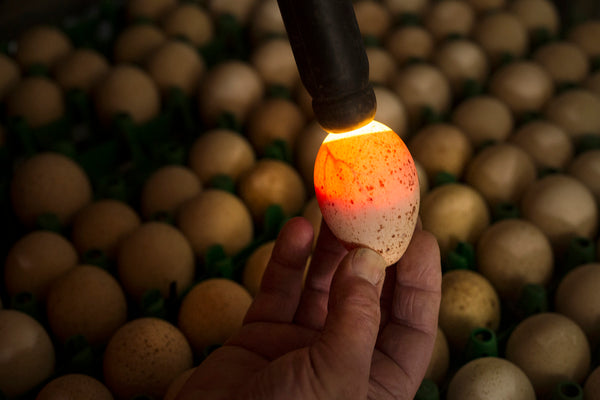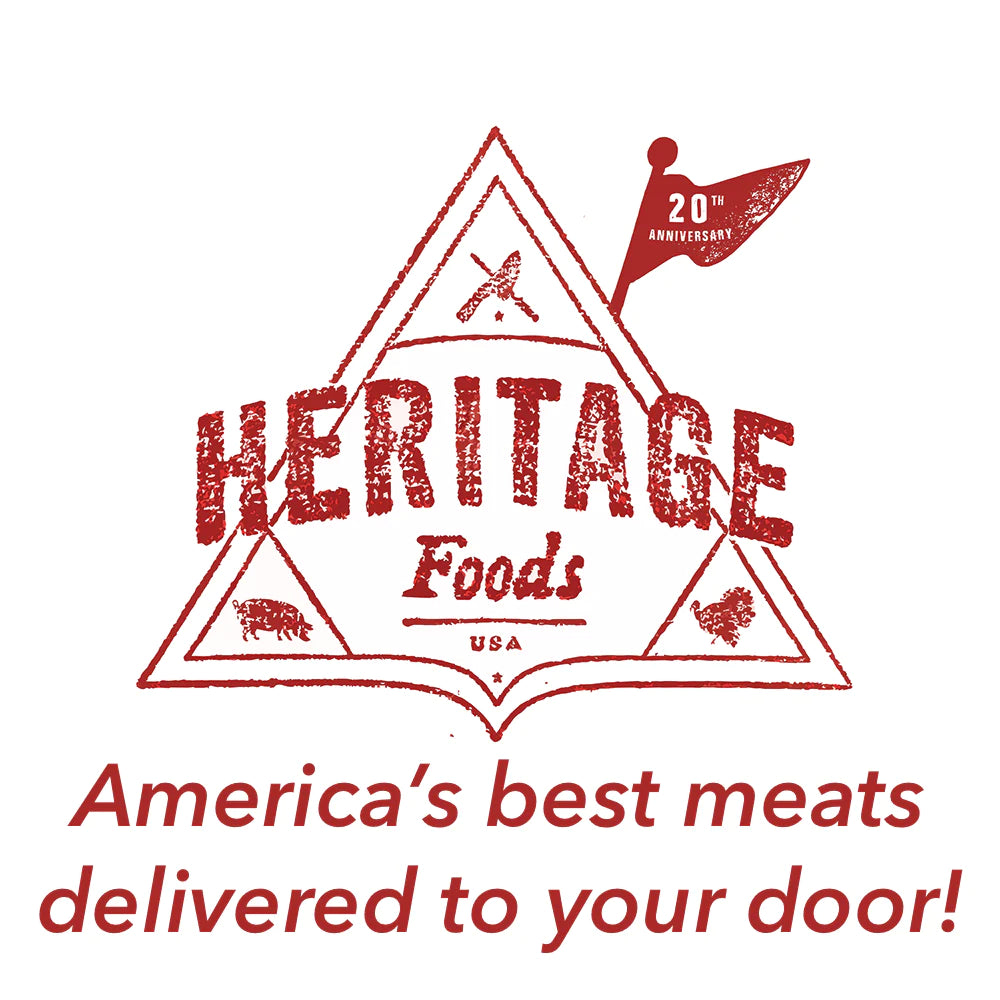100% Customer Satisfaction Guaranteed | Questions? Call Us at (718) 389-0985

In 2006 we got a handwritten letter from farmer Mark Newman asking us if Heritage Foods would ever consider selling his pasture raised old school Berkshire pigs. We said yes and a relationship grew that still continues today, now through his son David who has maintained the genetic line of Berkshires which can be traced back to the 17th and 18th century lines that came to these shores by way of the Berkshire region of England.

We met the Goods through a connection at Kansas State University where Craig’s father was a distinguished professor. Craig spent his life in agriculture growing up in the Flint Hills of Kansas, some of the best agricultural land in the world, perfectly adapted to free ranging livestock, which feed on the perennial grasses that grow there naturally.

Hatcheries are the source of all birds that we eat. In nature, the hatchery consists of a hen, an egg, and a nest. On a farm, the hatchery consists of an incubator machine where the embryos develop and the hatchery itself where poults spend their first few hours outside the shell. Hatchery numbers in America grew and grew during the early part of the 20th century. In 1918 there were about 250 operating hatcheries in the nation. By 1922 the number had climbed to 3,000. By 1926 to 9,000. And by 1934 there were 11,400 hatcheries — the peak of independent poultry production in the United States.

Some argue the origin of the Dorset Horn, or Horned Dorset, comes by way of the Merino sheep from Spain which was crossed with the Horned Sheep of Southwest England. By the 1750s Dorset Horn was the lamb breed adorning tables in England for special occasions. The first word on the breed in the Americas comes from Oregon around 1860, where the breed was introduced by the Hudson Bay Shipping Company. The Dorset Horn went on to become nationally famous a few years later at a livestock show in Chicago. The American Continental Dorset Club was organized in 1890.

A heritage chicken lays an egg and Jed Greenberg gathers it, but he never washes it. By not washing Jed maintains the bloom on the egg, a liquid that develops when the egg is laid. The bloom dries in seconds, but it covers the entire shell thus protecting the chick from bacteria. Washing, Jed says, lowers fertility and drives dirt into the egg which contaminates the inside. Unwashed eggs can be kept in a 60-70 degree room for 7-10 days, after which fertility drops. Jed stores his eggs in plastic egg crates with the bulbous end up.

Though the Duroc breed evolved from red pigs from another part of the world, it is considered one of the few “all American” breeds we have today. Unlike most breeds of livestock that were developed elsewhere and brought here, the Duroc is the result of two red colored breeds being crossed and then improved upon in the early 18th century in upstate New York. Where those two original red breeds came from is the subject of much debate as there are no pigs native to the Americas. Today the Duroc is in many ways the perfect pig boasting excellent meat quality. It is rugged and durable and has a great ability to efficiently convert pounds of feed into pounds of high quality meat. Durocs can range from a light golden almost yellow color to a dark mahogany.
© 2024, Heritage Foods Powered by Shopify
